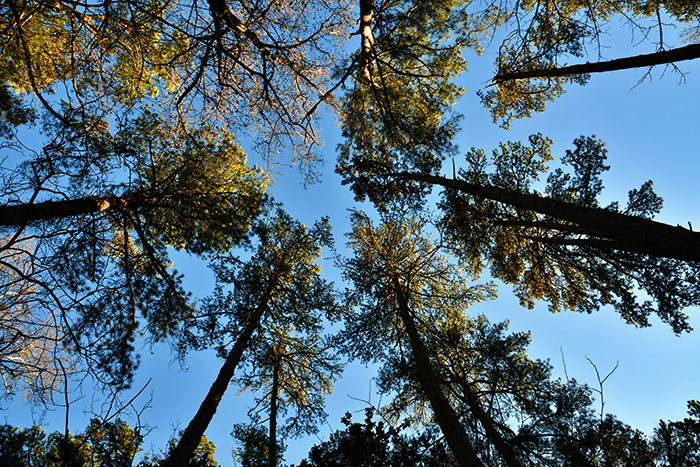
Estimating the age of a given tree is a surprisingly complicated task, as size does not necessarily correlate with longevity. Quick-growing species like boxelder maple (Acer negundo) and poplars (Populus spp.) shoot up rapidly in their first years of life, only to die back at the point where longer-lived species like oaks (Quercus spp.) are just getting started. (One exception is the tulip poplar, Liriodendron tulipifera, which is famous for both its rapid growth and its longevity.) Even two coeval members of the same species can look very different, depending on their growing conditions—trees with abundant water and nutrients will grow faster than those that lack them, and a small sapling in the understory might wait for decades in a holding pattern before shooting up to take advantage of a gap in the canopy.
The best method to determine a tree’s age is to count the growth rings in its wood. These cells—known as xylem—are continually produced throughout the growing season by the vascular cambium, a circle of green living tissue between the wood and the bark. However, the rate at which the wood is produced depends on temperature and water availability, with larger and lighter-colored xylem produced in spring and early summer, and denser, darker xylem later in the year, before pausing altogether when the tree goes dormant for the winter. Thus, each pair of bands is the record of one year’s worth of growth; taken together, they represent the approximate age of the tree.
It’s important to point out that this method is not foolproof—growth rings may not be visible in all parts of the tree, and rings are occasionally absent or missing under certain conditions. However, growth rings are an especially compelling piece of evidence. When considered with historical and cultural records and other evidence, the rings can yield an accurate picture of the local climate and conditions over time, as well as the history of an individual tree.
Fortunately, the age of many of the trees in the Gardens can be determined from their planting date in the accession records. Such is the case with the dawn redwood (Metasequioa glyptostroboides) in the Historic Gardens, which dates to 1949. However, any trees on site before these records began lack this information, and their age must be calculated by other means. Using a special tool called an increment borer, it’s possible to sample a representative cross-section of the wood and count its rings. But this procedure is invasive and can potentially lead to damage and infection, which is why no one knew the ages of any of the Gardens’ fallen trees until after the storm.
The oldest known tree in the garden may have fallen, but it’s entirely possible that an even older tree remains hidden in plain sight, dating back to the early 19th century when this was agricultural land. For now, any new champion Methuselah will remain in obscurity—perhaps until a storm of similar magnitude strikes again.
